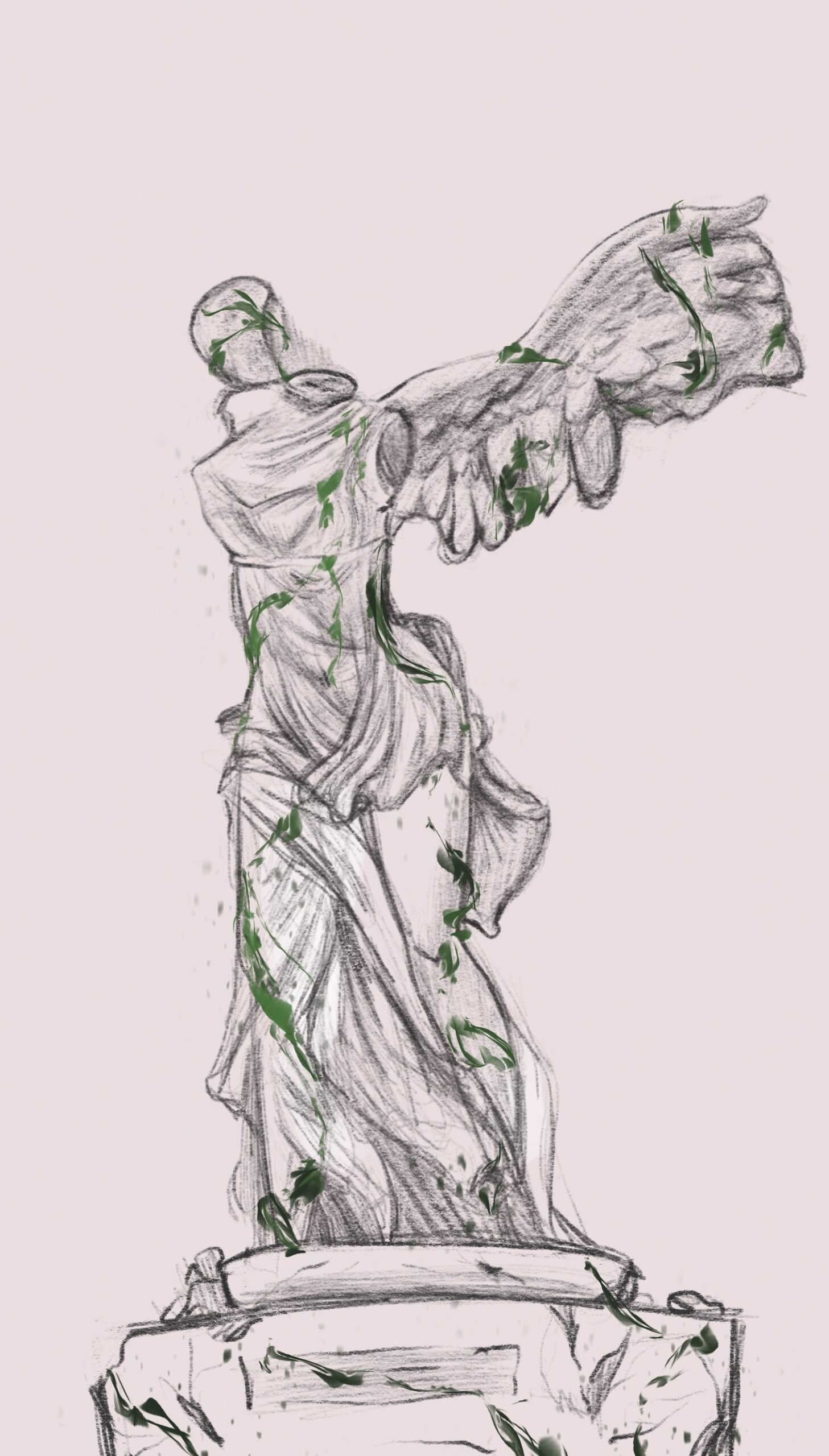The pure elixir
November 15, 2024
Last week, I chose against Hart Crane’s monumentalism for the sake of his common men—his hobos. Let us turn to what I think monumentalism looks like done right.
Stephen Vincent Benét is a name you’ve probably never heard. I do not fault you for that. His popularity in his lifetime surpassed that of many poets we now think to define the early 20th century (Eliot, Pound, etc.), yet he faded into obscurity soon after he died in 1943. The neglect of our poet historians is a separate issue in and of itself. That is what he was—a poet historian invoking his American muse, determined to capture “the pure elixir, the American thing.” And so he did in “John Brown’s Body,” a comprehensive poetic rendering of the American Civil War. As you could intuit from the title, the poem begins with John Brown’s raid on Harper’s Ferry and unfolds from there. I’d like to begin with a verse about the first man killed in the raid:
“There is no stone,
No image of bronze or marble green with the rain
To Shepherd Heyward, free negro of Harper’s Ferry,
And even the books, the careful, ponderous histories,
That turn live men into dummies with smiles of wax
Thoughtfully posed against a photographer’s background
In the act of signing a treaty or drawing a sword,
Tell little of what he was.”
From this stanza springs Benét’s method. His is not a “careful ponderous history,” and the men of it are not “dummies with smiles of wax thoughtfully posed against a photographer’s background.” In fact, Benét’s narrative is littered with these moments of clarity where he peeks through the cracks of the historical record. Later, on the battlefield, he darts between the massing armies and calls out:
“Turn your eyes away
From these chiefs and captains, put them back in their books.
Let the armies sleep like bears in a hollow cave.
War is an iron screen in front of a time,
With pictures smoked upon it in red and black,
Some gallant enough, some deadly, but all intense.
We look at the pictures, thinking we know time,
We only know the screen.”
Benét is not just giving us a historical education but an education in how to view history. There is so much beyond the amassing armies and the men in command—the iron screen that obscures humanity. He is both conjuring this screen and letting us know that we must distrust it. To combat the screen, he has breathed romance and emotion into a historical record that can become stiff and cold. The warmth of humanity was there, he chides, but my iteration of it is not the absolute truth. To me, this is the significance of Benét’s tradition, one he adopts from poets like Longfellow (whose writings, such as “Paul Revere’s Ride,” have distinctly shaped our perception of history). There is a life that only literature can lend to history, but only a select few have the discretion to enliven our history with a careful hand. When done poorly, our sense of the past is irrevocably distorted. We think we know the time when we only know the screen.
Benét has proven that he can be trusted with this task. There is a reason why the most striking and memorable passages in a book of war do not take place on the battlefield. Late into the war, during the quiet of the night in the Confederate camp, an aide-de-camp happens upon General Lee’s tent and watches his inert shadow through the tarp, thinking to himself that Lee has grown old “the way a river might grow old.” He lingers, waiting for Lee to move, afraid that he will not. A similar scene occurs after Richmond falls. Lincoln wanders through the destruction—houses on fire to his left, gangs of lost men lapping spilled liquor from the cobblestones to his right. He goes to the home of Confederate General George Pickett (of Pickett’s Charge fame) and knocks. His wife appears, startled by the “strange, gaunt figure” on her doorstep, who only introduces himself as “one of George Pickett’s old friends, ma’am.” Then he wanders on.
In this way, Benét demythologizes our historical figures. Lee is no titan and neither is Lincoln. We are reminded at every turn of the common humanity of the major players of the war. The battles are not fought by nameless masses under the direction of notable men—they are fought by barrel-chested Jake Diefer of Pennsylvania and proud Clay Wingate of Georgia. Melora Vilas and her family hide from the war effort in the wilderness; Lucy Weatherby attends her grandiose Southern balls; Spade fights his way up an unrelenting river to his freedom. The experiences of so many during the war are amalgamated into recognizable types and made intimate and real in his verse: the Yankee soldier, the escaped slave, the Southern aristocrat. In their sacrifices and failures, we are meant to see the flesh on their faces, not the hard visages of stone monuments.
As with “Leaves of Grass,” I believe that “John Brown’s Body” is essential reading—to me, there is nothing greater. If “Leaves of Grass” is the triumph of the human soul, “John Brown’s Body” is the triumph of the American spirit. “The pure elixir, the American thing” is what Benét returns to at the very end of the poem, as he describes the steel structures of modernity exploding out of John Brown’s moldering form. He implores us: “If you at last must have a word to say, say neither, in their way, ‘It is a deadly magic and accursed,’ nor ‘It is blest,’ but only ‘It is here.”’ There is something here that Benét was unable to define about the spirit of America, and neither are we, but we feel it. We must have faith in it.


Comments
Before submitting a comment, please review our comment policy. Some key points from the policy: